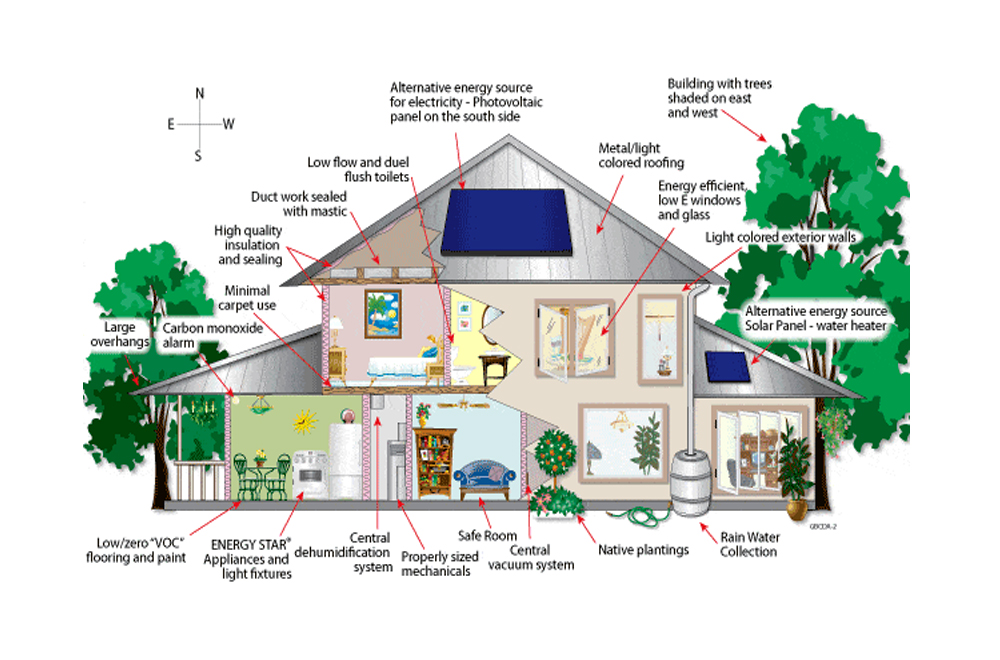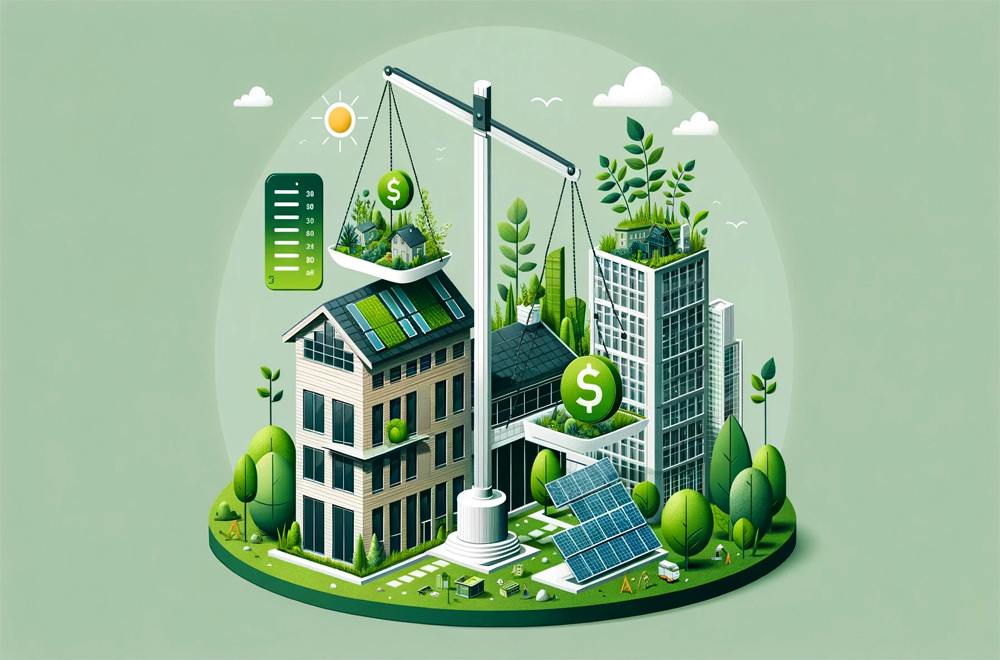To be successful in the construction industry, it has become increasingly important to pay attention to the statistics, trends, and data about the building industry. To be efficient, you have to know the numbers that affect your company. It is imperative to keep track of where the project is regarding the budget, timelines, and KPIs. The more numbers supporting projects, the better.
Using the data and statistics about the industry allows for more visibility in projects. This data can also provide valuable information that may be needed to make future decisions. These future decisions could impact your preconstruction, planning, operational efficiency, risk assessment, workforce, and productivity tools. The construction industry is complex and requires that change and demand be addressed during every project.
Periodical review of these types of statistical data may help increase productivity and help reduce costs. There has to be a thorough understanding of the current construction industry’s numbers for the data to be beneficial. To be efficient industry-wide, cutting-edge technology with room for transformation holds the key to success.

Table of Contents
Toggle1)The Construction Industry Workforce
The real backbone of the construction industry is the workforce behind it. The people and contractors who are responsible for operations and manual labor continue to make the industry thrive. Even through times of uncertainty, these workers stand strong to create homes, businesses, and commercial buildings used today.
- 11.2 million people were employed in the construction industry in the United States in 2018 [1]
- Not including those who are self-employed, the national estimate for employment in a construction or contractor position is 6,194,140 [2]
- 61% of construction and contracting companies plan to hire within the next six months [3]
- Women make up 10% of the total construction workforce [4]
- In the United States, the age range for a construction worker’s median age is 37-47. The average median age is 41 years old [5]
- Of the total number of ethnicities employed in construction, 30.4% identify as Hispanic or Latino, 1.9% identify as Asian, and 6.4% identify as Black or African American [6]
2)Underperformance Problems in Construction
An increasing problem in the construction industry is underperformance. Whether caused by insufficient staffing, poor craftsmanship, or sub-par materials – projects seem to take longer, and costs are getting higher. Knowing what to look for can help you address the potential underperformance threats that may jeopardize your current and future projects.
- 69% of owners say that due to poor contractor performance is the biggest reason for underperforming projects [7]
- 29% of firms have begun putting longer completion times into their new project bids because of lack of workforce, which put the future development and infrastructure projects at risk [8]
- Only 25% of projects came within 10% of the deadlines they initially set in the past three years [9]
- Megaprojects become delayed or overbudget 98% of the time [10]
- Around the globe, 77% of those megaprojects are 40% or more behind schedule [11]
3)Construction Labor Shortages are Industry-Wide
Without the skilled workers of the industry, there is no construction industry. Laborers and contractors are all skilled in their trades, making them assets to the industry. When a shortage exists in the industry, not only do the construction companies suffer but so does the entire globe.
- 80% of contractors report that they are having difficulty finding qualified workers [12]
- From 2005-2016, the percentage of younger construction workers declined by 30% [13]
- As of December 2019, there were 239,000 unfilled construction positions [14]
- 29% of firms are turning to incentives and bonuses to attract skilled craft workers [15]
- 92% of contractors report being moderately concerned about the skill level of their workers [16]
4)Risk is a Major Concern in the Construction Industry
Like with any large project, in or out of the construction industry, there is some risk involved. Whether it be your time or your money, you are putting yourself on the line. When problems arise, it can be detrimental to both contractors and the project owner.
- On average, 35% of all construction projects will undergo at least one major change [17]
- Up to 30% of the design process and construction data is lost by the closeout of the project [18]
- The majority, 78%, of engineering and construction companies believe that project risks have increased [19]
- Immediate financial goals are the focus of 43% of construction firms, not organizational resilience [20]
- $33 million was the global average for the amount for construction disputes [21]
- The total time for the average global construction dispute was 17 months [22]
- 52% of rework is caused by poor project data and miscommunication that costs approximately $31.3 billion [23]
5)The Costs Associated with Construction Are on the Rise
The rising costs in the construction industry are inevitable. When the market rises, the cost of materials rise. The more expensive materials are, the more project owners will have to pay, which may significantly change the amount of work they have done. For construction companies and contractors, this can mean that their supply may not be ample enough. There may even be a loss of revenue just to keep clients happy.
- An increase of 10% is expected for construction material costs [24]
- 44% of firms have reported the need to increase construction prices due to labor shortages in the industry [25]
- Up to 40% of contractors believe that steel and aluminum tariffs will have a high impact on their business for at least the next three years [26]
6)New Design Methods Are Changing the Industry
More people find it easier to call on modular home companies and other prefabricated designs for their construction project needs. These jobs reduce the amount of work available and the number of projects traditional construction companies receive. There is more want for the design-build process than the design-bid-build projects.
- 23% of firms are reporting that they are taking steps to improve their jobsite performance with lean construction techniques, BIM tools, and off-site prefabrication processes [27]
- Design-build projects are completed faster, 102% faster, than the traditional design-bid-build projects [28]
- Project owners say they have begun to shy away from traditional design-bid-build projects.
- 58% of these owners have used or plan to use design-build [29]
- Approximately 90% of the firms that have use prefabrication report improved productivity, improved quality, and a decrease in the schedule-timeline [30]
- A CAGR of 6.5% is predicted for modular construction through 2026 [31]
7)Technological Advances and the Construction and Contracting Industry
Technology has advanced over the years at an exceedingly rapid rate. In every industry across the board, you will find where it has had ample influence on that industry’s growth and future. Advancements have been made to the BOM, the reporting, and even how scheduling is completed. Technology helps track hours, maintain inventory, and so much more. Increased revenue and growth could be a result of properly implemented technologies.
- 75% of construction companies use cloud storage or similar features [32]
- Three or more mobile apps are reportedly used by 21.7% of construction firms for their projects [33]
- There was a 4% increase in the use of safety applications via a smart device in 2019 [34]
- The use of drones at construction sites are becoming increasingly popular [35]
- 16% of construction companies utilize autonomous equipment, but an additional 8% plan to implement it by 2020 [36]
- Construction firms can use augmented reality to improve their 3D modeling, but only 6% of construction companies utilize access to AR/VR technology [37]
- Only 2 out of 5 construction professionals in 2018 planned to upgrade their management software during the next 12 months [38]
- In trials, the efficiency of autonomous vehicles mixed with human-operated excavators showed a 40% improvement compared to the conventional means [39]
- Over the last decade, $10 billion has been allotted to funding technology in the construction industry [40]
- Approximately 60% of construction companies have R&D sectors of their company for new technology implementation [41]
- 21.5% of R&D sectors in construction companies have more than five people within the department [42]
- About 57% of construction companies have considered using a job-site employee tracking technology [43]
- 10.8% of construction workers utilize some type of fitness tracker or smartwatch while working [44]
- Of all employees looking to add technology to their construction firms or contracting companies, 35.9% are hesitant about it [45]
- 55% of construction firms already use BIM software. An additional 27.5% plan to implement the technology within the next decade [46]
- If BIM-related work is necessary, 10.7% of construction firms will outsource the work [47]
- The lack of IT staff is most often cited, by 38.2% of construction companies, for their lack of technology implementation [48]
8)Emerging Construction Trends and Industry Growth
There will always be new things that construction firms can try to get a hand up to their competition. Trying new marketing strategies or promotion through social media seem to be some of the more popular alternatives. The better the firm’s strategies, the more likely it will get to catch a ride on the wave of increased growth from a thriving market.
- 75% of construction firms have begun promoting themselves on social media [49]
- With new trends in mind, many construction companies are looking to prefabrication and modular construction as an effective means to advance in the industry. 91% of off-site construction is for prefabrication, and 78% is for modular buildings [50]
- The global construction market is expected to grow to $8 trillion by 2030 [51]
- The construction market in the United States is estimated to grow faster than the Chinese construction market over the next 15 years [52]
- In 2019, there was a global stunt in growth. The United States was down 1.2%, and Western
- Europe was down 2.2% in 2019 [53]
- The Asia-Pacific region is the area that accounts for the largest share of the global construction industry – India, China, and Japan [54]
- The global construction industry is expected to grow by 3.1% in 2020 [55]
- More than 50% of contractors and construction firms expect profits to increase in the next six months [56]
- There was a $98 billion (5%) increase in the United States power construction in 2019 [57]
- A 6% increase was recorded in the construction of offices in the United States in 2019 [58]
- 1.55 million new housing units are planned annually in the United States, which is up from 583,000 in 2009 [59]
- Given the current population growth, the construction industry would need to build 13,000 buildings every day between now and 2050 to accommodate the projected 7 billion people who will be living in cities across the country [60]
9)Green Building Increasing in Popularity
The construction of LEED-certified buildings is becoming more popular across the country. Project owners want to do their part to reduce their carbon footprint and help save the environment. These types of construction are also known as “green” buildings. These constructions are made to be energy-efficient and provide tax discounts to construction firms.
- Buildings account for approximately 40% of CO2 emissions globally [61]
- Construction firm survey participants report that using the LEED certification system has helped them to build better-performing structures overall [62]
- It is anticipated that the construction of nonresidential green building segments will grow by a CAGR of 9.25% by the end of 2023 [63]
- The entire market for green building construction is expected to grow at a CAGR of 10.26% from 2018 to 2023 [64]
- The residential segment of green construction dominated the market with a global share of 60.9% and generating 123.4 million in 2018 [65]
10)How These Statistics Can Help You Grow
The statistical data about the construction industry can help keep clients calling and projects on the table. It is this data that teaches the lesson for growth and how to help facilitate it. After researching all of the data and statistics, you can see that despite the setbacks like a decline in the workforce, the industry itself bounces back.
Data can also help decide on future projects. Should we add green buildings to our project offering? You know that the industry is expected to grow at a rapid rate for green buildings. There may be benefits to getting a head start on LEED certifications. Many construction firms are adding these projects to their offering due to the environmentally-friendly aspects.
Technology is the future for the construction industry. There is room for growth in this sector, from using CAD designs to create technological generated BOMs for projects to drones for photographing areas. Many firms state that they cannot afford the new technologies. You would be surprised what you can do with your smartphone.
Review these statistics as a way to jumpstart your construction firm’s goals for 2021. Learn from the relevant statistical data from 2020 to create the roadmap to success in the future.






